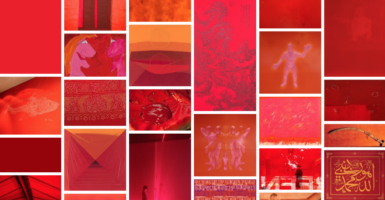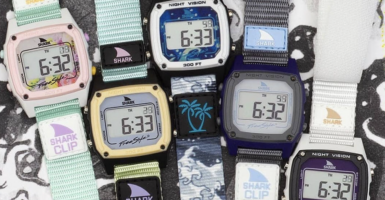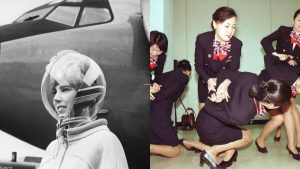Photos Showing What Las Vegas Was Like In The 1950s
Modern-day Las Vegas is a tourism behemoth, known for its lavish shows, multibillion dollar projects, and larger-than-life spectacle.
The Las Vegas of the 1950s was still emerging as a betting mecca. While it didn’t quite have its current outsized reputation, the city was still a part of the national consciousness.
It boomed in the ’50s.
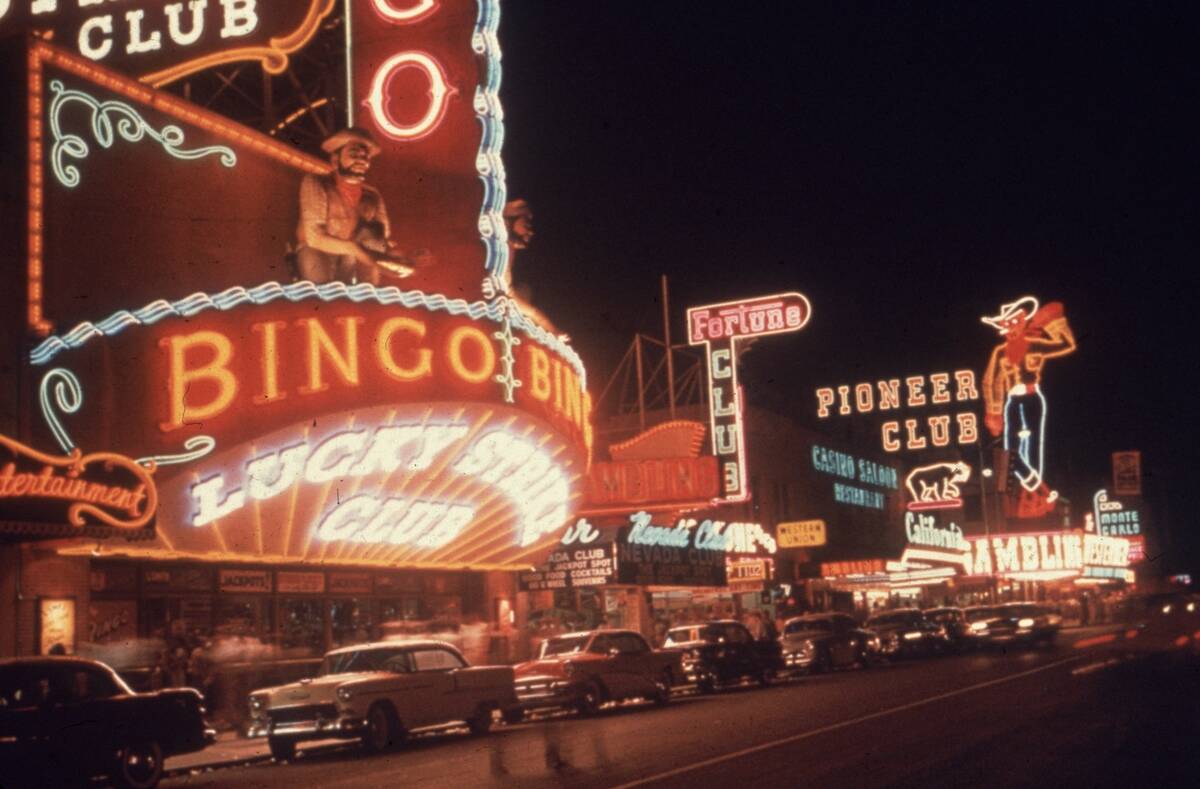
Las Vegas was once seen as a destination for people seeking a divorce, as Nevada’s marriage laws were more lax than most other states.
This aspect of the Vegas tourism scene was still present in the 1950s, but the city was becoming more of a destination for its casinos and stage shows.
The city was lit up with neon.
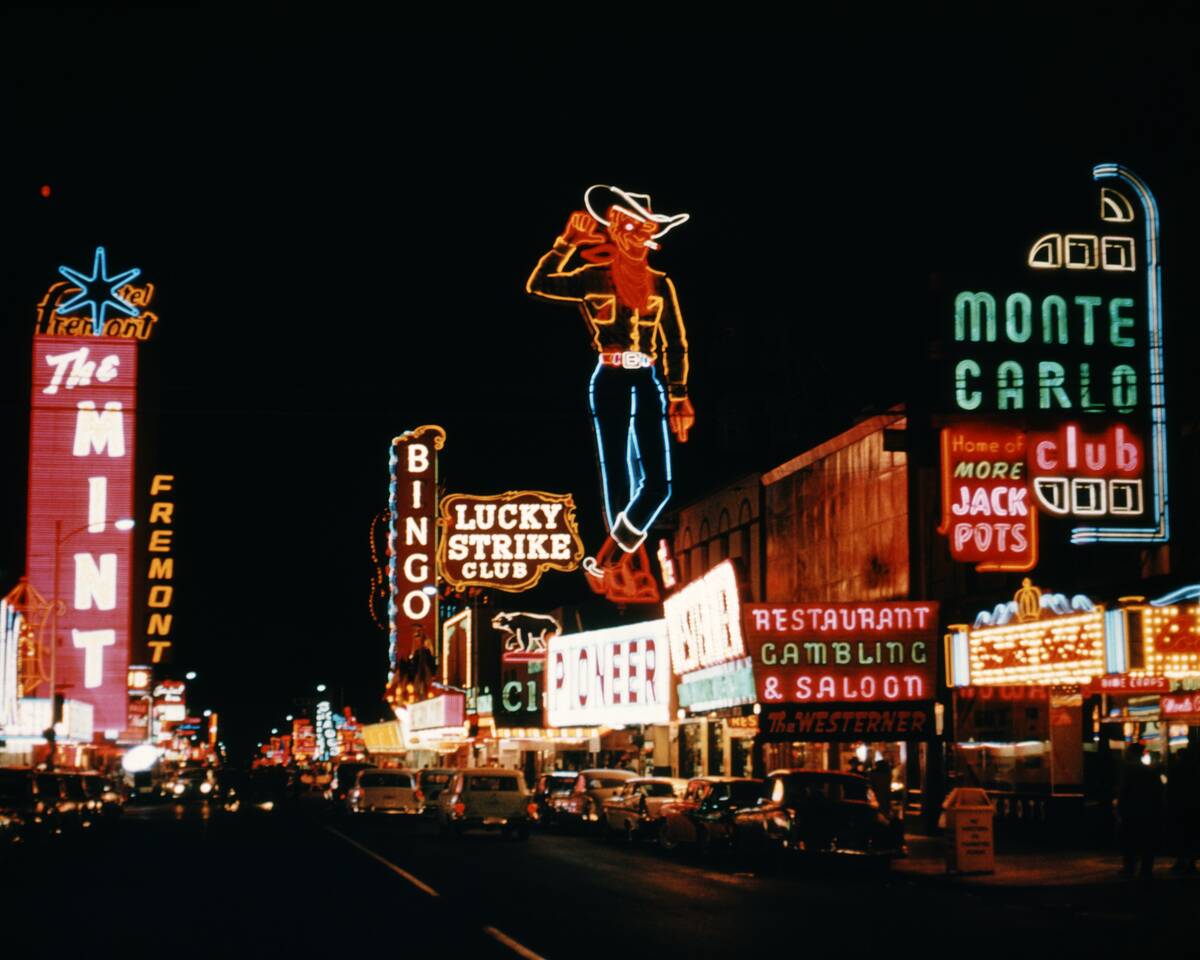
One of the hallmarks of Las Vegas, for decades, has been the array of bright lights along the casinos of the Strip.
This 1950s photo shows that the Veegas was already in fine form by the midcentury years, with vivid signs (some of them animated) beckoning tourists in to the city’s various casinos.
Luxurious resorts opened.

This image of the Tropicana Hotel shows it just one year after it opened in 1958. Known as “the Tiffany of the Strip,” the luxe accommodations included gardens and a pool area.
While it might seem humble by modern standards, the Tropicana was seen as one of the most luxurious resorts in Las Vegas when it opened. It helped to set the template for hotels and resorts that would follow.
Celebrities flocked to Vegas.
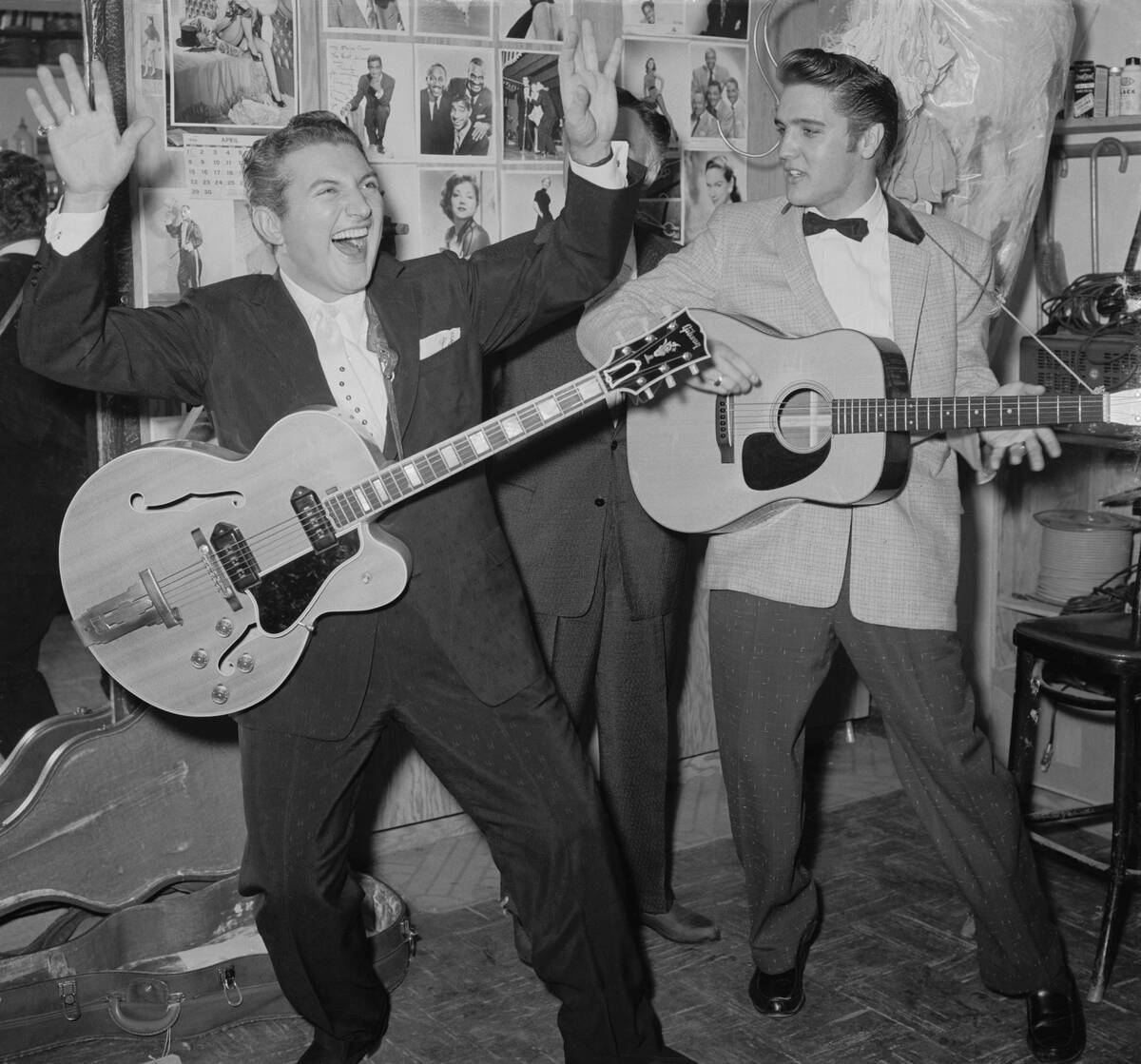
This 1950s photo shows performers Liberace and Elvis Presley. At the time, Liberace was at the peak of his fame and Presley had just emerged as a star.
Of course, Presley would become nearly synonymous with Vegas in the years to follow, as the King put on a series of successful Vegas concerts late in his career.
Important casinos opened their doors.
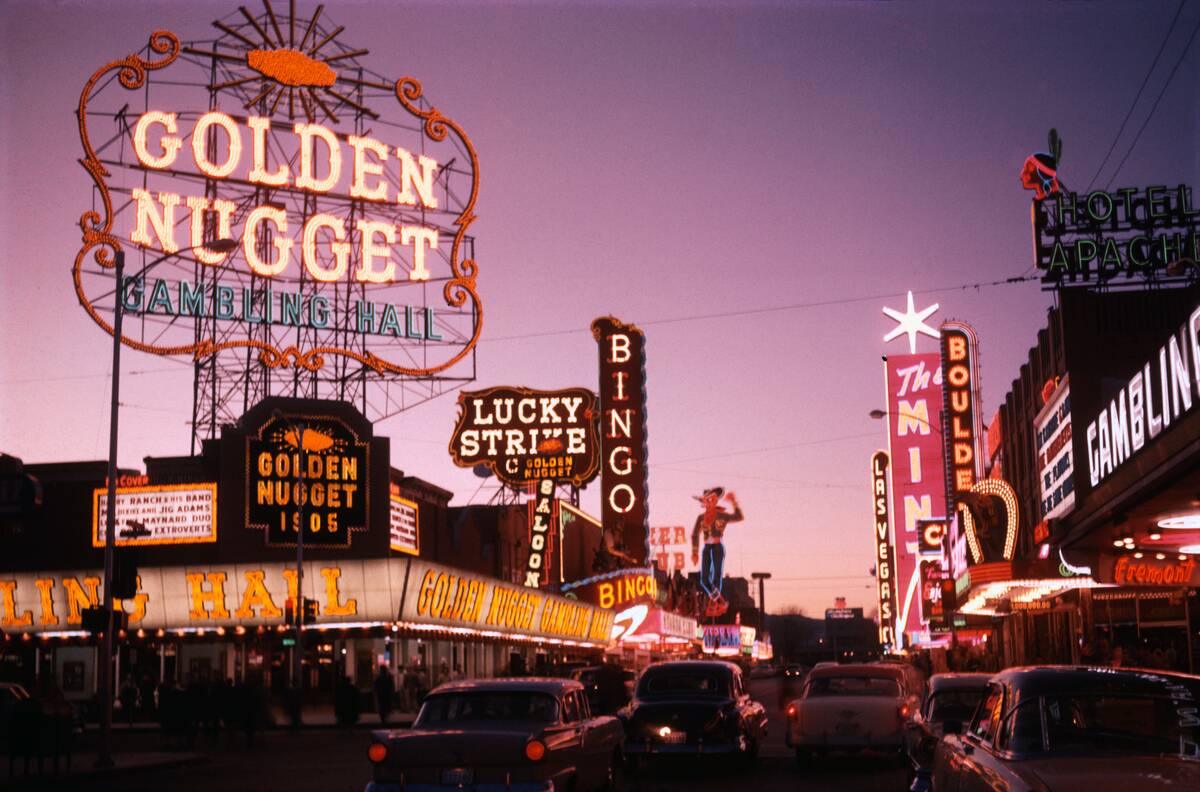
The Golden Nugget is the focal point of this sunset image of Vegas’ various casinos, and was the focal point of Las Vegas itself for many people.
Originally opened in 1946, the Nugget came into its own in the 1950s, epitomizing the old-school Vegas vibe of glittering lights, polished brass, and high-stakes betting.
Showgirls became iconic.
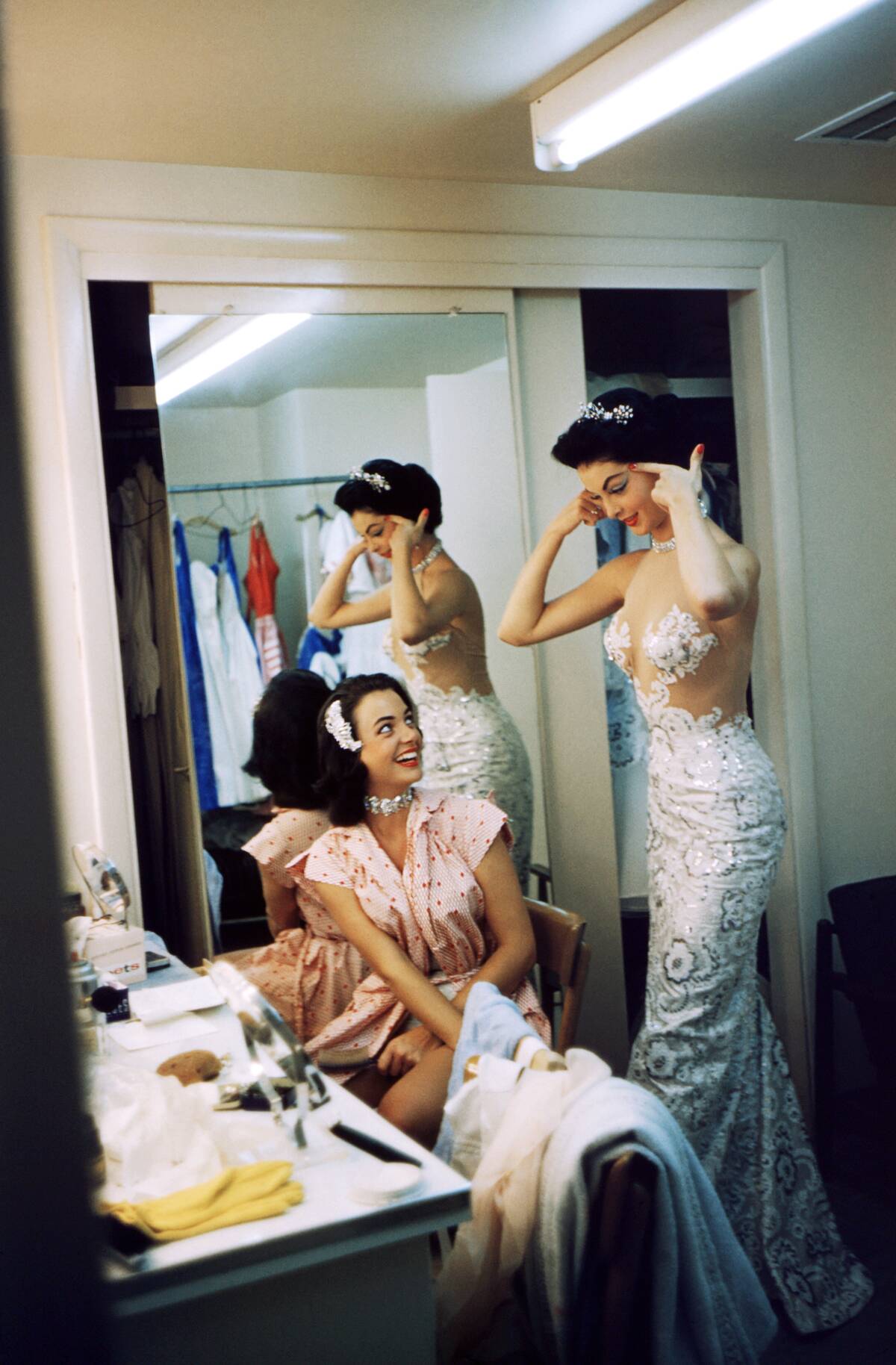
Showgirls – one of the most iconic symbols of Vegas – dazzled audiences in the 1950s with their elaborate costumes and synchronized song-and-dance routines.
This image shows a candid moment between two showgirls as they prep for their show in a dressing room at the Tropicana Hotel.
It offered a front-row seat to nuclear tests.

Las Vegas in the 1950s featured not just casinos and shows, but also a front-row seat to atomic testing thanks to the Nevada Test Site, about 65 miles northwest of the city.
Before above-ground nuclear testing was banned, visitors would assemble to watch the mushroom clouds from nuclear tests in the desert. This image shows people watching from the pool at the Last Frontier Hotel in Vegas.
The Rat Pack was a defining force.
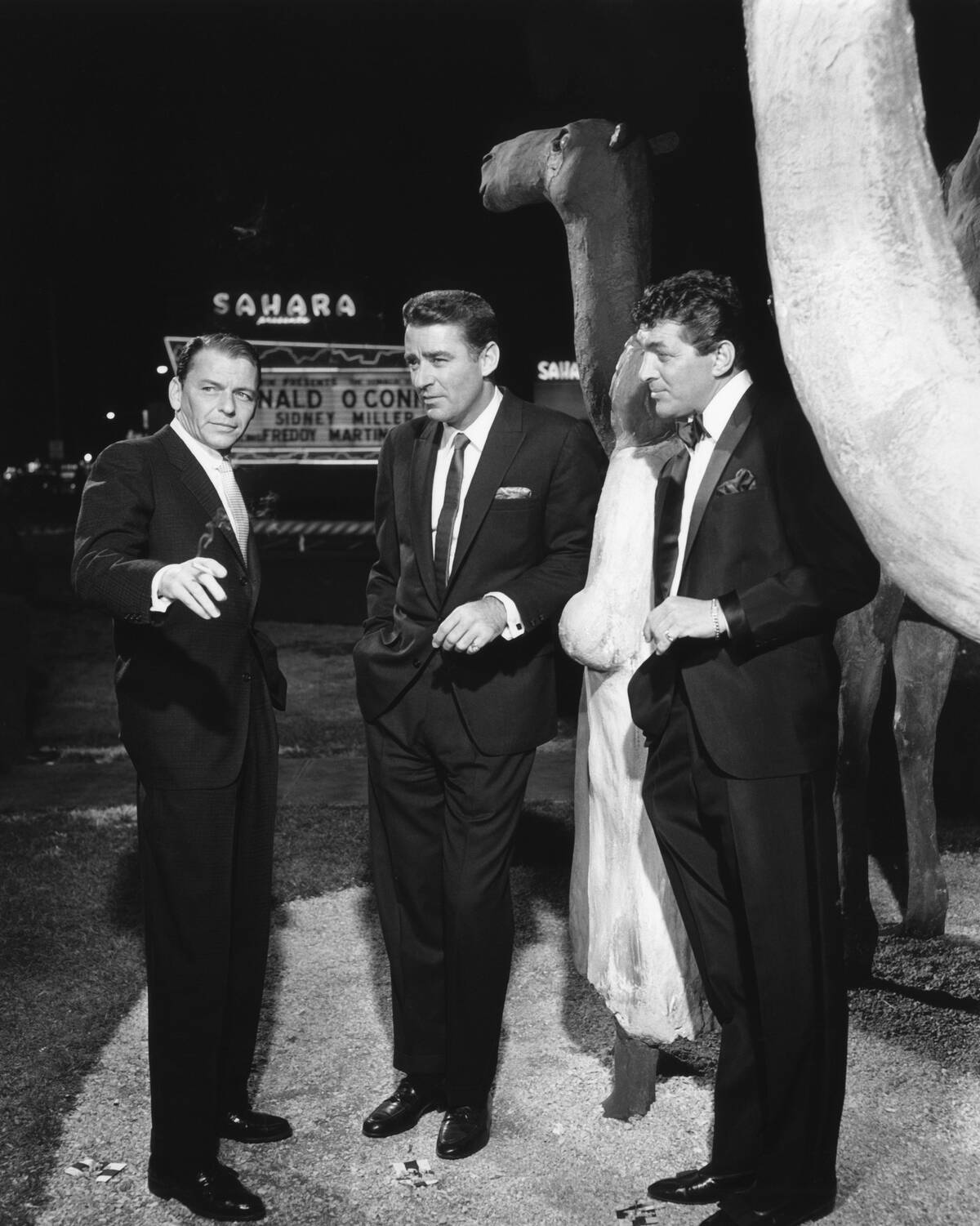
This image shows Frank Sinatra, Dean Martin, and Peter Lawford as they shoot the caper film Ocean’s 11. A group of singers, including Sinatra, Martin, Sammy Davis Jr., and Joey Bishop, became known as the Rat Pack, and Vegas was their playground.
Rat Pack singers performed regularly at the Sands Hotel, and carried themselves with a cool, effortless charm.
It was a place for stars to be seen.
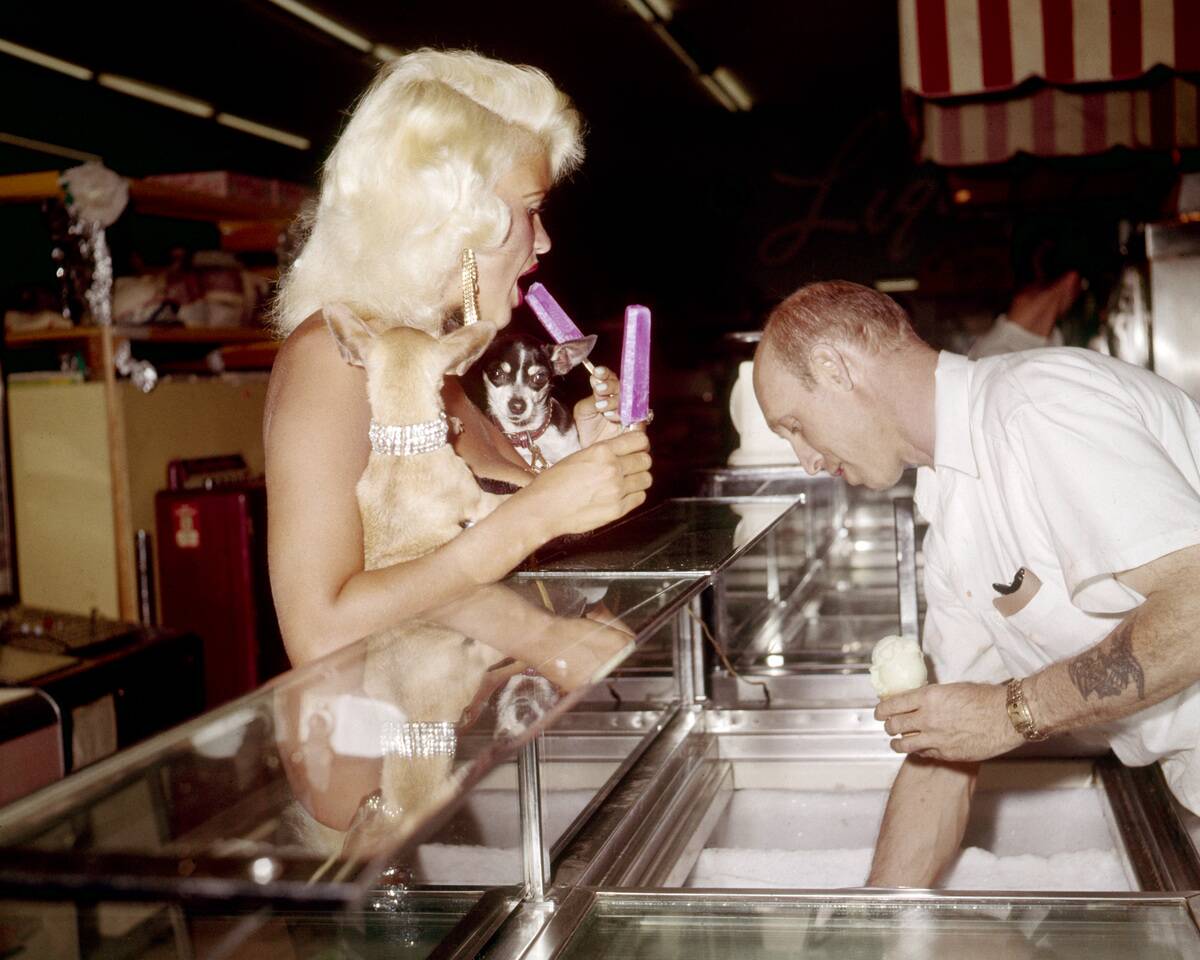
Actress Jayne Mansfield, seen here as she visits a Vegas ice cream shop with her dog, was a presence in 1950s Las Vegas, headlining shows on the Strip.
Mansfield performed at venues like the Dunes Hotel and brought some Hollywood shine to the Vegas stage.
It was a photographer’s paradise.
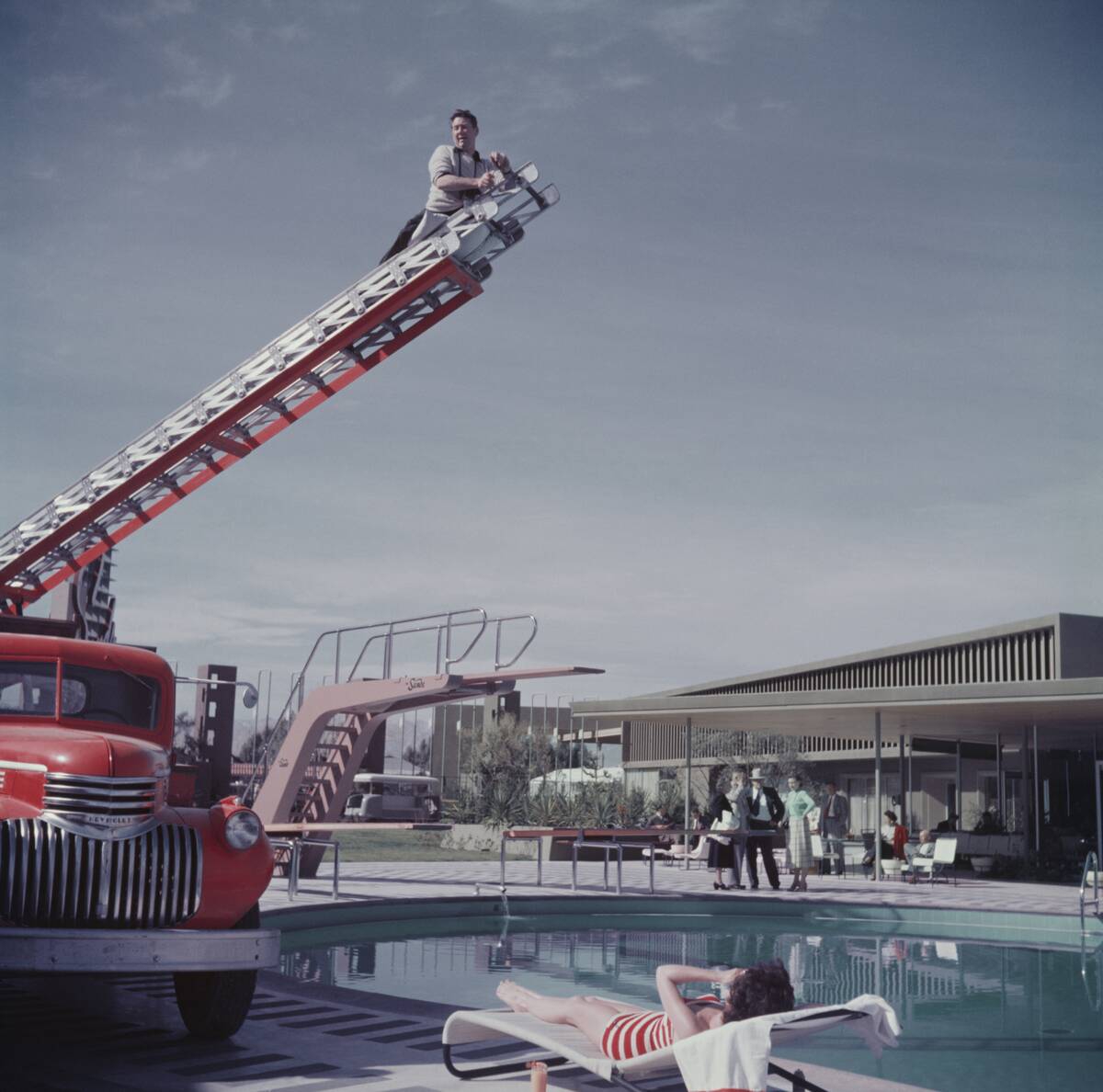
Las Vegas offered untold opportunities for photographers in the 1950s, from its stunning desert landscapes and sunsets to its proximity to nuclear testing.
Of course, the presence of celebrities also offered opportunities for photographers. This image shows photographer Slim Aarons as he dangles on an extending ladder to take photographs of actress Mara Lane.
Movie stars loved Vegas.
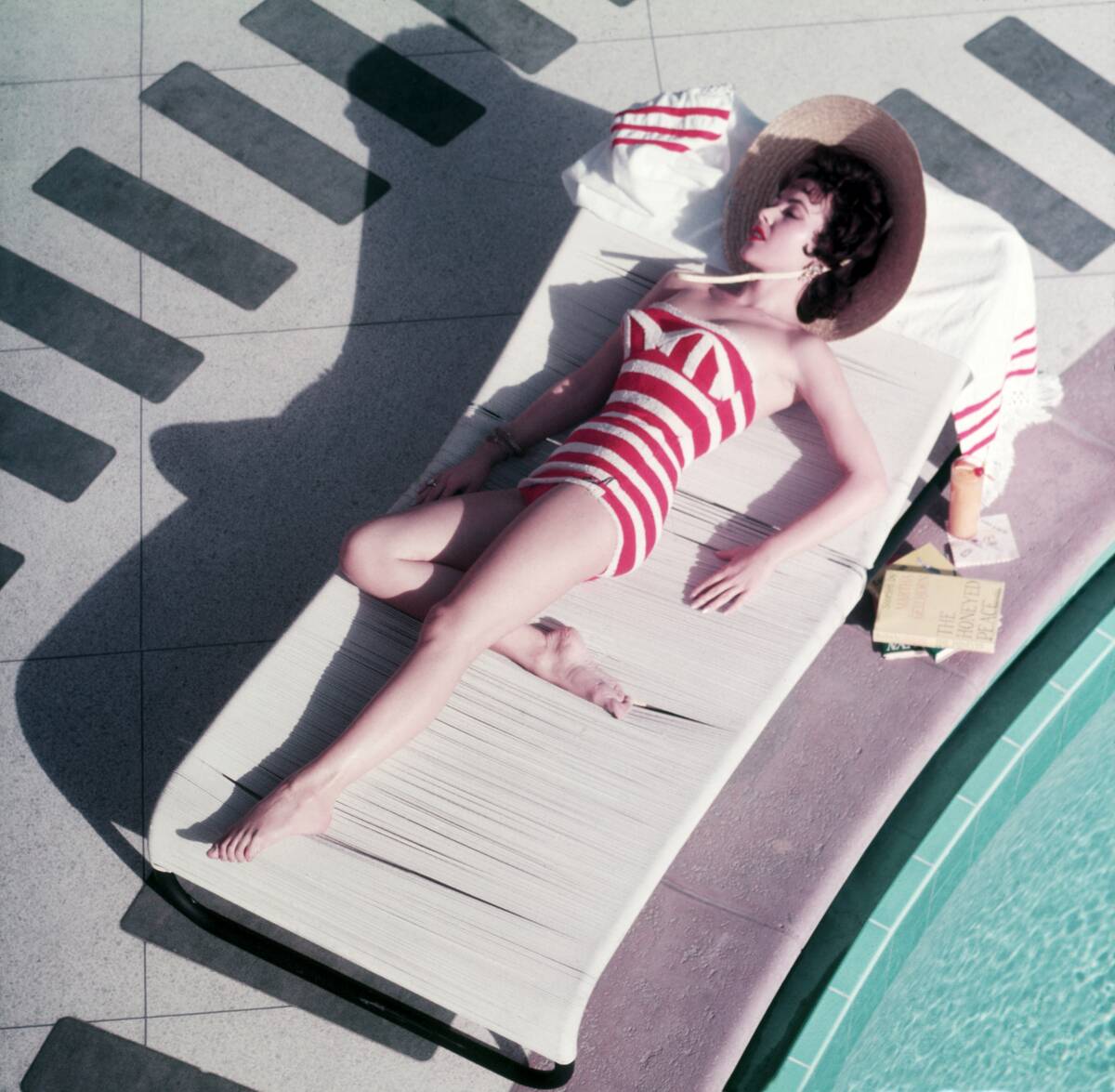
This image shows the results of photographer Slim Aarons’ efforts to photograph Mara Lane. At the time, Lane was 24 years old and in the prime of her film career.
The proximity of Las Vegas to Los Angeles made it an attractive destination for movie stars right from its earliest years, as it was close enough for a weekend getaway from Hollywood.
Stage shows were all the rage.
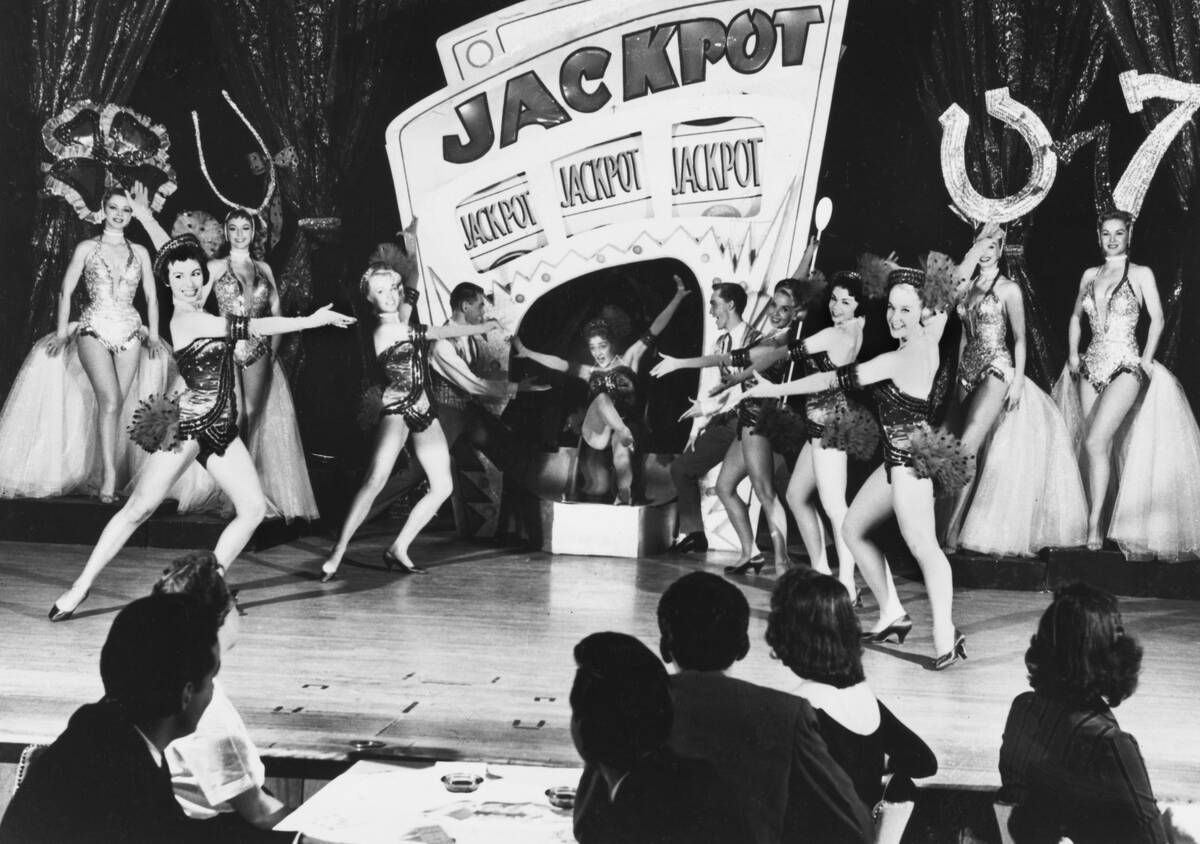
While Vegas is likely best known for its betting options, the city has always provided plenty of entertainment options for those who want to stay off the casino floor.
This 1958 image of an elaborate stage number at the Sahara shows a scene typical of the era. In time, the stage shows of Vegas would only get more complex.
Fremont Street was the original heart of Vegas.
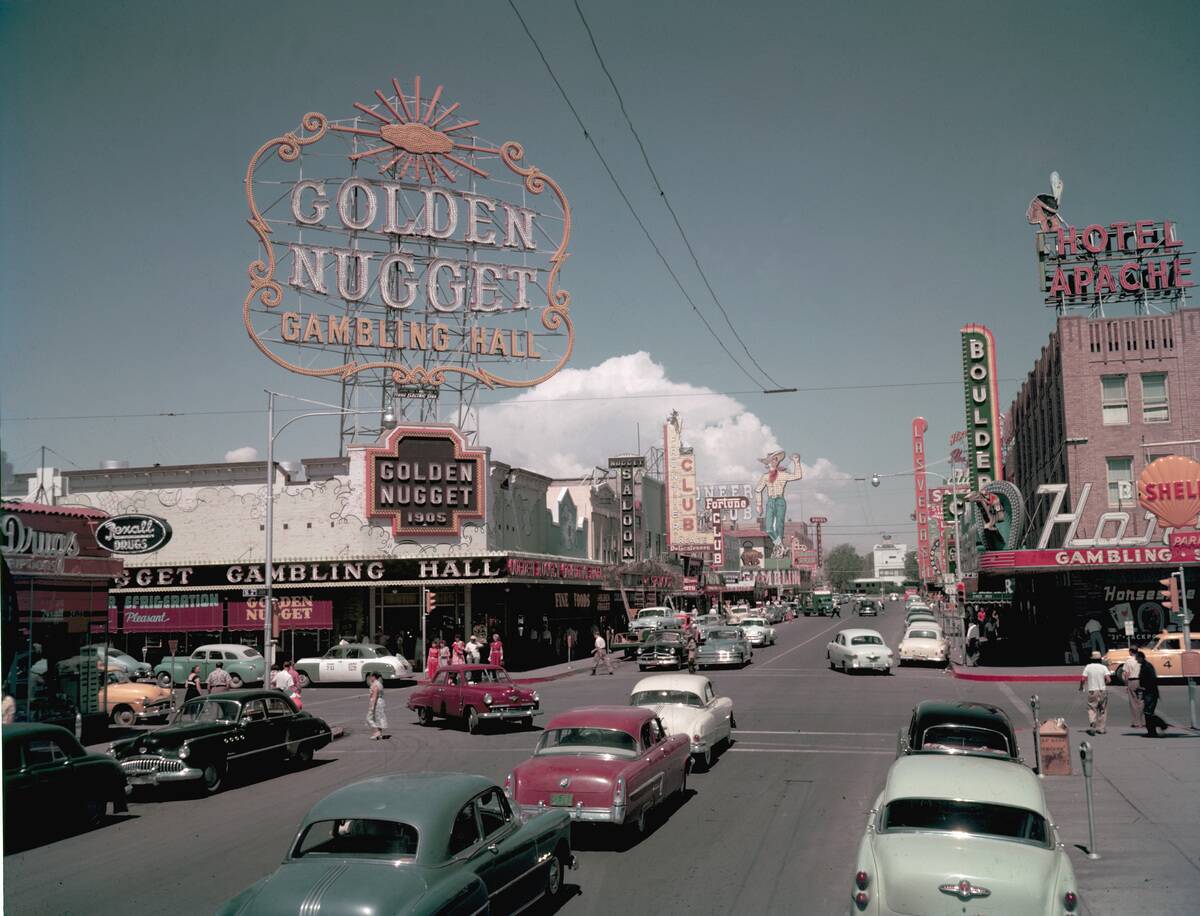
In the years before the Strip took center stage as Las Vegas’ “main street,” Fremont Street was the heart of the city.
This 1953 image of Fremont Street shows the Golden Nugget in the foreground, alongside other casinos like Binion’s Horseshoe and the Mint in the background.
The Boulder Club was an elder casino.
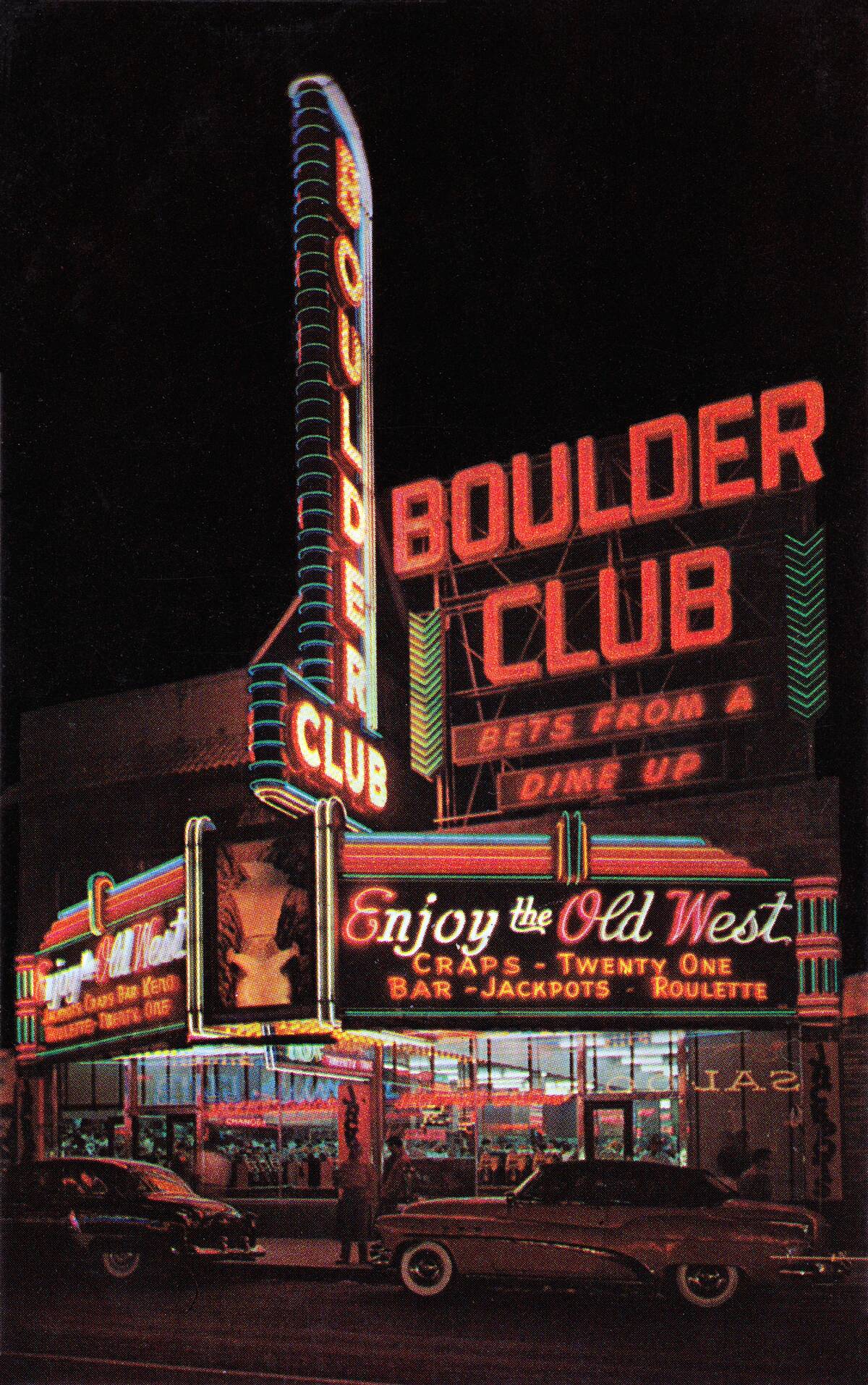
The Boulder Club opened up all the way back in 1929, making it one of the oldest casinos in Vegas. By the 1950s, the cozy casino was a staple of Fremont Street.
Sadly, the original Boulder Club burned to the ground in 1956. It reopened soon after, but its glory days were in the past and it eventually closed its doors for good.
The Sands opened in the ’50s.
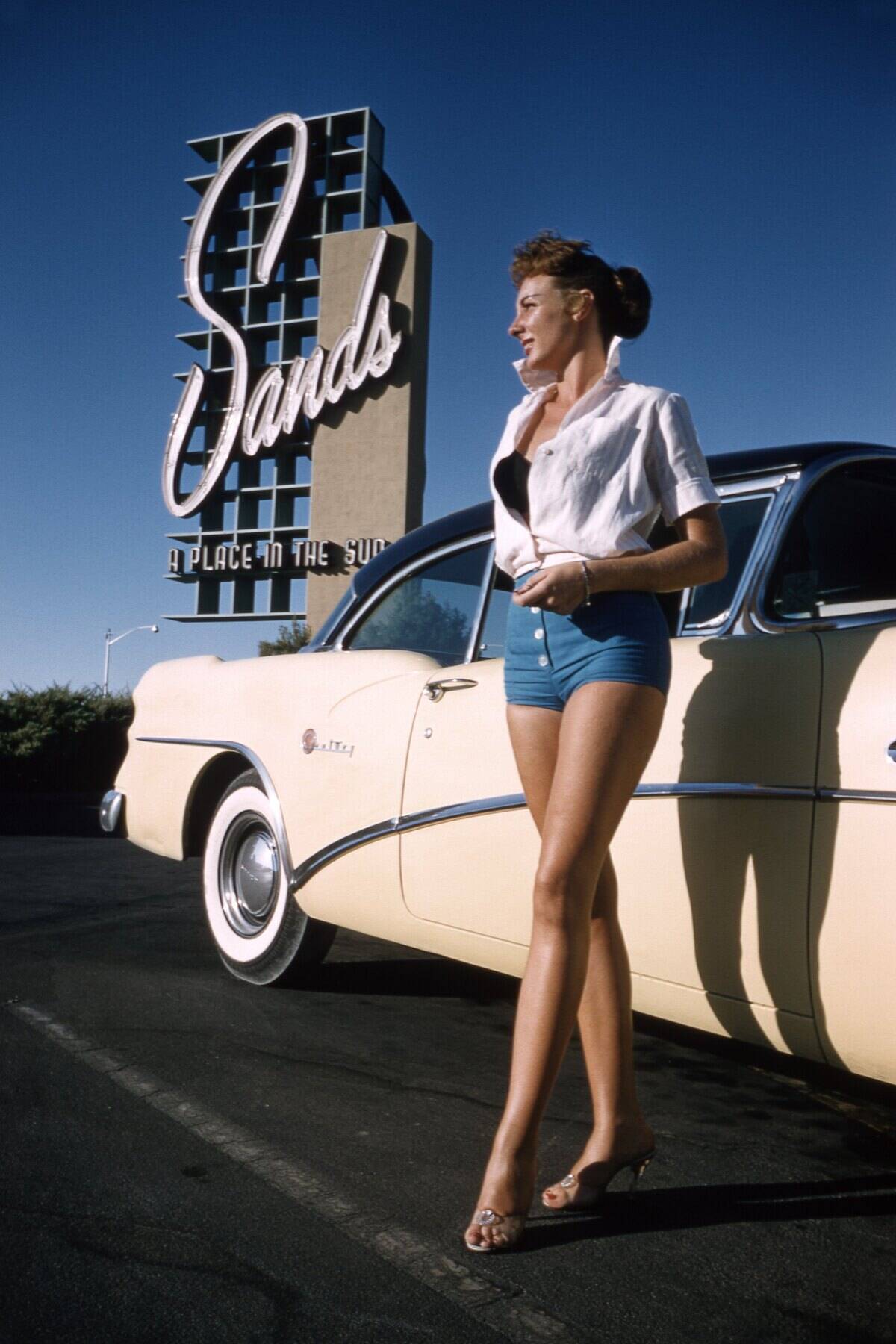
This staged image shows a model posing with two icons of the 1950s: a 1954 Buick Roadmaster and The Sands Hotel, which opened in 1952.
The Sands featured opulent decor and top-tier entertainment which frequently featured members of the Rat Pack. The legacy of The Sands continued until it was demolished in 1996 to make way for the Venetian.
Big props were the order of the day.
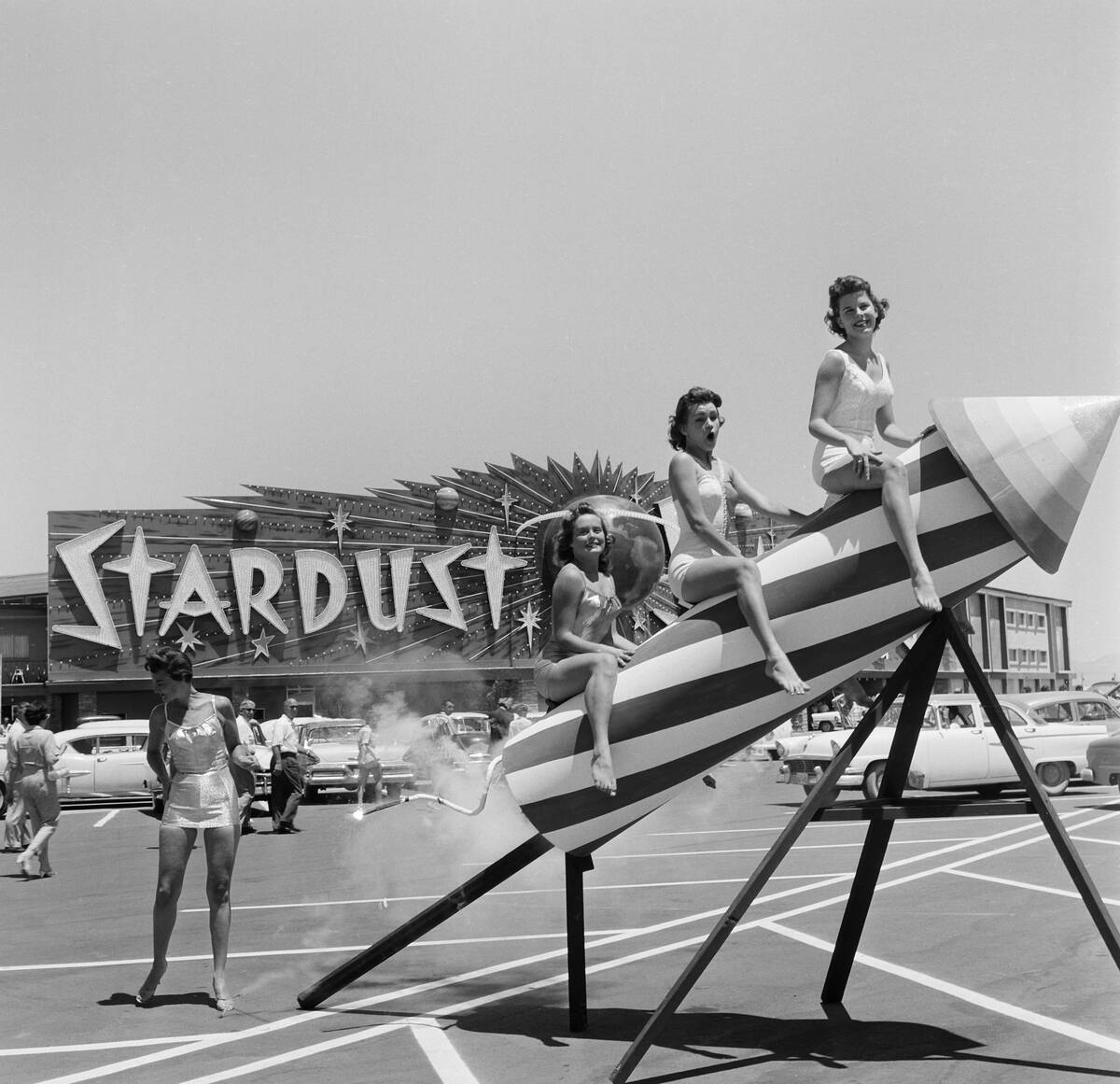
This 1958 photograph of the just-opened Stardust Resort and Casino shows the kitschy, space-age influence of the casino’s decor.
Unlike early casinos, the Stardust embraced the era’s futuristic design trends, which largely resembled something out of The Jetsons. The casino lasted for nearly half a century until it was demolished in 2007.
For some people, it wasn’t about the glamour.
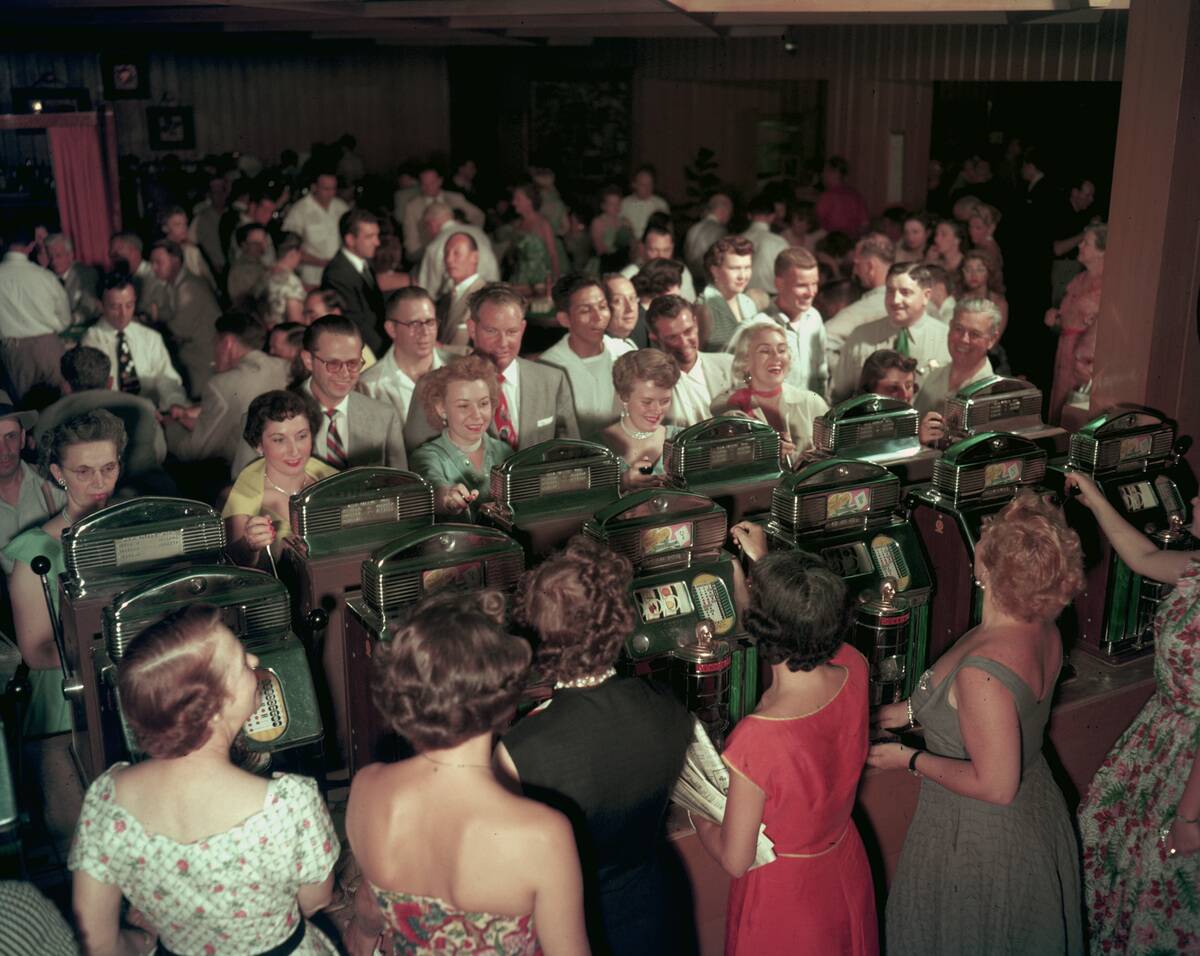
This image of people playing slot machines on a crowded casino floor shows that for many Las Vegas visitors, it wasn’t about bright lights and showbiz – it was all about betting.
By the middle of the decade, slot machines – known as the “one-armed bandit” exploded in popularity and became a cornerstone at Vegas casinos.
It was a place for love.
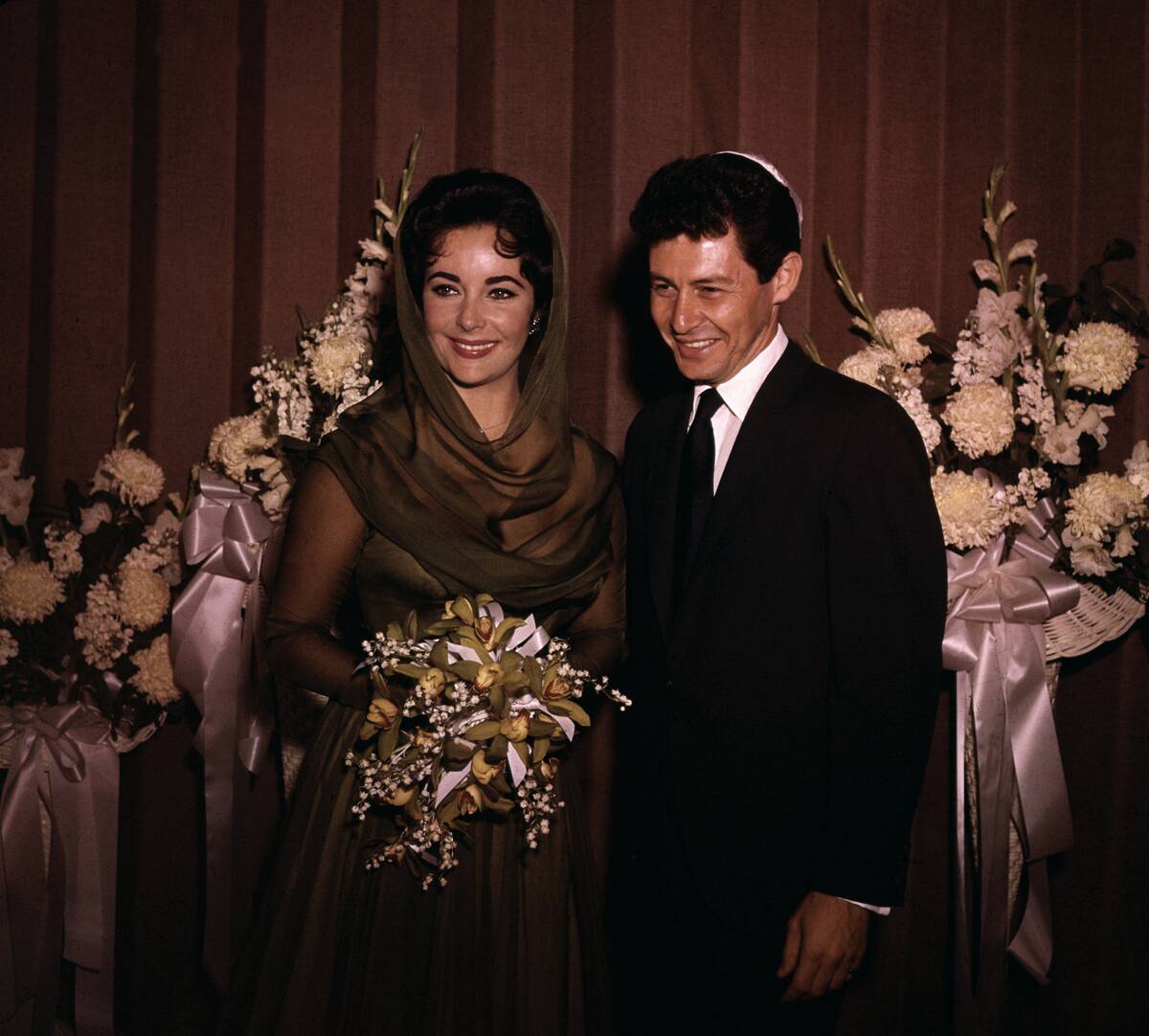
While Vegas made its name in part thanks to its quickie divorces, it also became known for its quickie weddings. This 1959 photo shows celebrities Eddie Fisher and Elizabeth Taylor tying the knot.
The marriage was extremely short-lived, as Taylor would begin an affair with actor Richard Burton a couple of years later.
Casinos were rarely empty.

One of the hallmarks of modern Las Vegas is the fact that it offers non-stop entertainment, with around-the-clock betting and casinos that never close their doors.
While Vegas in the ’50s was a more humble place, some of its modern characteristics took shape during this decade. Even in the wee hours of the morning, casino floors were open for anyone who wanted to place a bet.
It’s changed, but the core focus is the same.
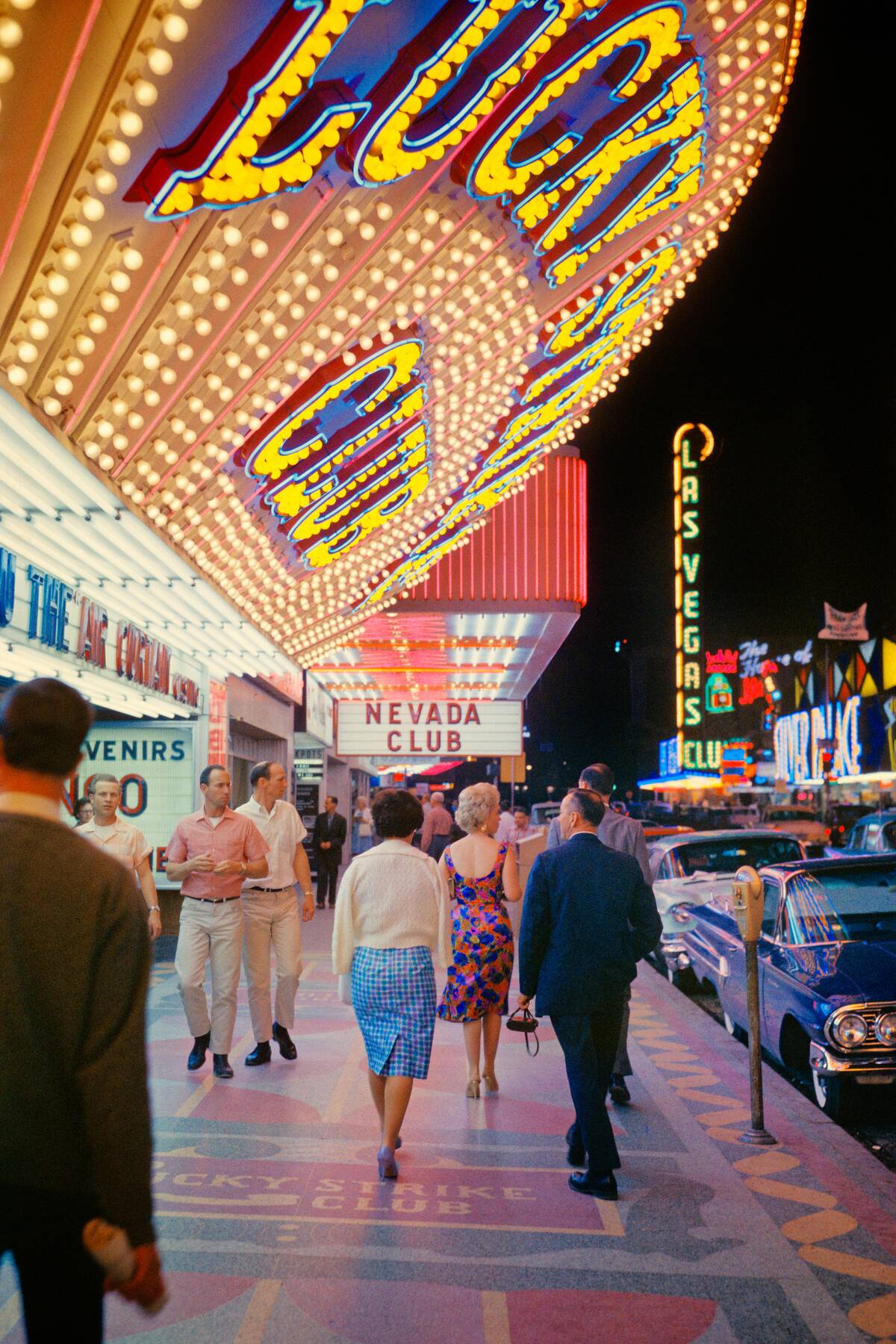
Over time, the big casinos eventually moved from Fremont Street to the Strip, and stage shows moved from the Rat Pack to Siegfried & Roy and beyond.
Despite the constantly changing face of Las Vegas and its modern amenities, at its core, the city still operates much as it did in the 1950s.
